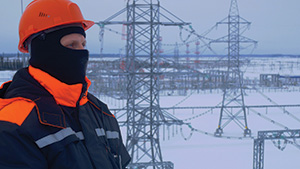The challenges with recruiting young people
A recent survey conducted by the Skilled Careers Coalition asked students, counselors and parents to share their views regarding skilled trades versus college and military paths, according to Construction Executive.
Construction Executive shares the following findings from the survey:
- Citing a lack of information about opportunities, only 15% of students surveyed were considering a technical/vocational school or apprenticeship after high school.
- 92% of students, 91.3% of counselors and 80.3% of parents surveyed agree skilled-trade workers are as important as first responders and service members.
- 69% of students said it is outdated to assume a four-year degree is the best pathway to success.
- 80% of parents said they have the most influence on their child’s decision making, but 48.8% admit they do not have enough information about starting the technical or vocational school process.
- 84% of parents believe skilled trades provide a stable career path, less time in school, less debt and an overall better quality of life.
- More than half (53.9%) of counselors surveyed cite a lack of resources to help guide students interested in pursuing skilled trades or vocational programs.
- 90% of counselors surveyed agree they need to share more information with students and parents about a skilled-trade career option.
- 76% of all respondents agree a career in the skilled trades can lead to entrepreneurial success.
Sharing information is key to bringing young people into the industry. Visit nrca.net/workforce-recruitment and careersinroofing.com to ensure you have the materials needed to help recruit workers.
Proper PPE during winter is essential for worker safety
Cold temperatures, ice, poor visibility, high winds and wet conditions during the winter can lead to safety issues for construction workers, according to the National Center for Construction Education and Research. Workers must have the proper personal protective equipment to ensure they are prepared for any weather conditions that may arise.
NCCER shares the following cold-weather PPE items all construction workers should have.
- Hard hat liner. Hard hats do not cover workers’ ears, so construction workers can use hard hat liners designed to wear with PPE that cover the ears and sometimes the neck.
- Face mask. A cloth bandana, gaiter, scarf or dust mask over the mouth and nose can provide protection on windy days.
- Thick gloves. Construction workers may need thicker gloves during the winter. Also, glove liners are designed to be worn as a base layer under thick gloves to provide extra protection.
- Winter boots. Workers should wear winter boots with slip-resistant treads designed to grip icy surfaces. Waterproof boots can help keep workers’ feet dry, but it is important pant cuffs cover the tops of boots because water does not evaporate quickly once inside boots.
- Thick socks. Cotton socks hold onto moisture for a long time, which cools down the wearer’s body temperature. Construction workers instead should wear wool or synthetic wool, polyester and nylon blend, which are effective insulators and have moisture-wicking properties.
- Base layer. Construction workers should wear layers, and the first layer—the base layer—should wick moisture away from the skin. Merino wool, polyester and synthetic blends can be good base layers.
- Middle layer. The middle layer—the insulating layer—should be merino wool, polyester fleece, goose down or synthetic fill jackets, which trap heat close to the body without holding onto excess moisture.
- Shell layer. The shell layer should be a waterproof, breathable jacket that protects against wind and rain. Common choices are polyester and nylon, and they often have a coating that helps rain and snow slide off.
- Heated clothing. Heated clothing can be rechargeable, which has a cord that plugs into an outlet to recharge, or battery-operated, which usually requires AA or AAA batteries. Heated PPE options include gloves, beanies, vests, socks, balaclavas, scarves and pants. Follow manufacturers’ guidelines for safe use.
- Eye protection. Snow reflects enough sunlight to cause eye damage if people stare at it too long. Construction workers should use sunglasses or goggles with ultraviolet protection to minimize sun exposure in snowy conditions.
Wisconsin was top state for construction in 2024
Associated Builders and Contractors’ annual Merit Shop Scorecard named Wisconsin the No. 1 state for construction in 2024, according to ABC.
View the Skilled Career Coalition survey
Released annually since 2015, the scorecard ranks all 50 states and Washington, D.C., based on policies and programs that strengthen career pathways in construction; encourage workforce development; and advocate for fair competition on taxpayer-funded construction projects.
Wisconsin’s construction industry earned the top spot because it had the highest scores on fair and open competition policies prohibiting government-mandated project labor agreements; a sustained level of positive job growth, with a five-year job growth rate of 4.4%; a 97.4% graduation rate for students in career and technical education programs and 91.4% rate of postsecondary CTE students placed in careers and/or apprenticeships programs; and a workforce development pipeline that delivers a strong construction labor supply amid a severe nationwide labor shortage.
The top 10 ranked states were:
- Wisconsin
- Arkansas
- Kentucky
- West Virginia
- Arizona
- Indiana
- Florida
- Utah
- Mississippi
- Tennessee
The bottom five locations were Washington, the District of Columbia, Illinois, New York and Hawaii.
WEB
EXCLUSIVE




COMMENTS
Be the first to comment. Please log in to leave a comment.